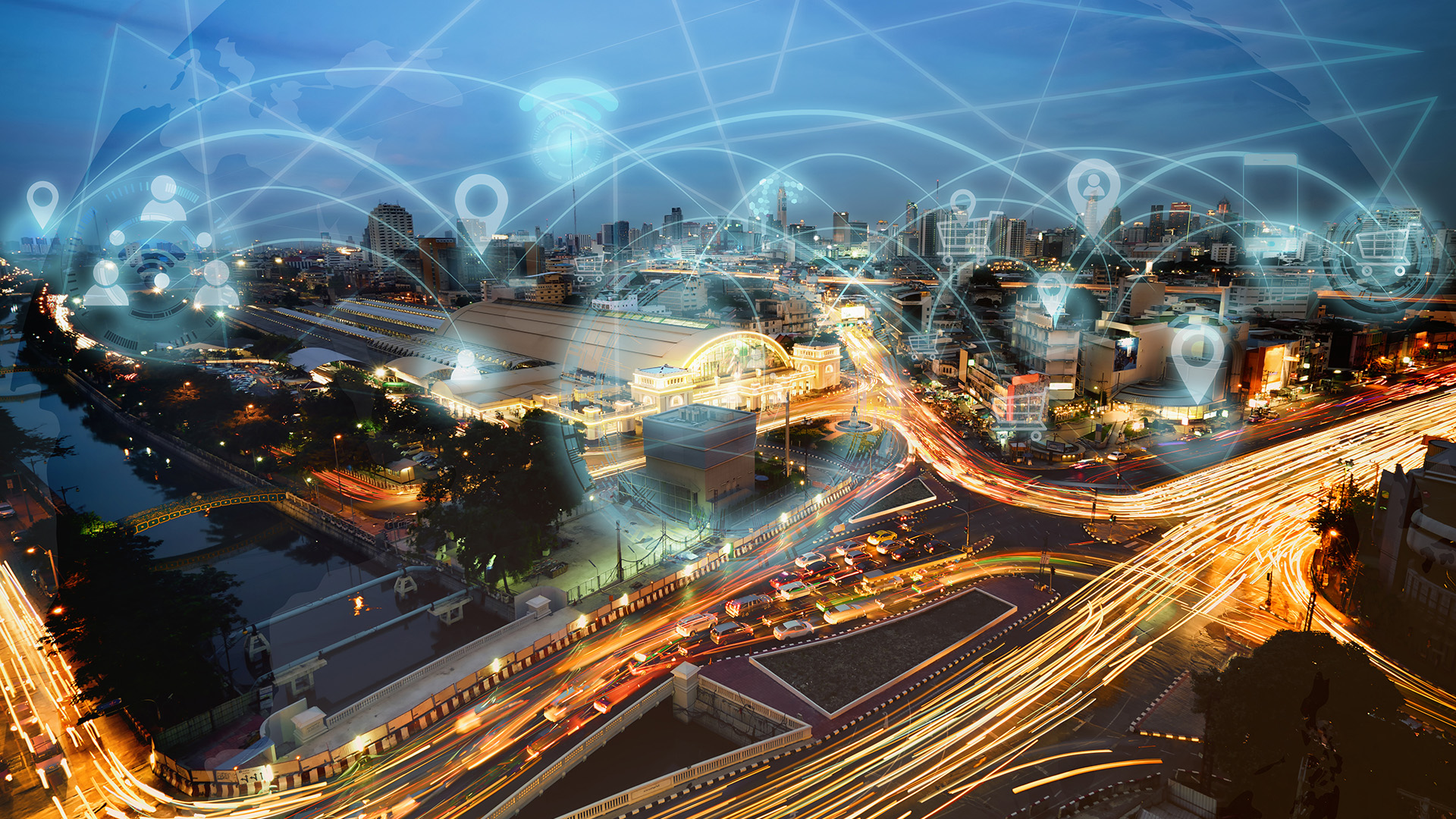
Imagine walking through a bustling city, where you can see not just the buildings and streets around you, but also a layer of digital information enhancing your environment. Street names, historical facts, traffic updates, and even future construction plans appear before your eyes, seamlessly blending with the physical world.
This isn’t a scene from a science fiction movie; it’s the future of urban planning and construction powered by Augmented Reality (AR).
Welcome to the era of smart cities, where AR is transforming how we design, build, and interact with urban spaces. Let’s dive into how AR is paving the way for smarter, more efficient, and more connected cities.
Bringing Blueprints to Life
Gone are the days of flat, static blueprints. With AR, city planners and architects can bring their designs to life in 3D, right in the real-world environment where the structures will stand.
- 3D Visualization: Imagine being able to walk around a virtual model of a new skyscraper, seeing it from every angle, understanding how it fits into the existing landscape, and making adjustments on the fly. This immersive experience allows for better planning and decision-making.
- Community Engagement: AR can transform public consultations. Residents can visualize proposed changes to their neighborhood, such as new parks, roads, or buildings, in a more tangible way. They can provide feedback, seeing exactly how the changes will affect their surroundings.
Enhancing Construction Efficiency
Construction is a complex process, but AR is making it more efficient and precise.
- Real-Time Information: Workers can use AR glasses or apps to access real-time data and instructions overlaid on the construction site. This reduces errors and ensures everyone is on the same page.
- Safety and Training: AR can enhance safety by highlighting potential hazards and providing virtual training sessions. Workers can simulate dangerous scenarios and learn how to handle them without any risk.
- Progress Monitoring: Project managers can visualize the construction progress in real-time, comparing the current state with the digital model to ensure everything is on track.
Infrastructure Maintenance and Management
Maintaining a city’s infrastructure is a never-ending task, but AR is making it more manageable.
- Underground Utilities: Imagine being able to see the underground network of pipes, cables, and sewage lines without digging a single hole. AR can overlay this information on the ground, helping workers identify issues and plan repairs more efficiently.
- Dynamic Maintenance: AR can assist in real-time diagnostics and maintenance of infrastructure. For example, technicians can use AR to get instant data on a malfunctioning traffic light, guiding them through the repair process.
Smart Traffic Management
Traffic congestion is a major issue in many cities, but AR offers innovative solutions.
- Navigation and Alerts: AR can provide drivers and pedestrians with real-time navigation and traffic alerts. Imagine your windshield displaying not only the route but also highlighting traffic jams, construction zones, and available parking spaces.
- Public Transport: Commuters can use AR to get real-time updates on bus and train schedules, see the quickest routes, and even find the least crowded carriages.
Environmental Impact and Sustainability
Sustainability is at the heart of smart city development, and AR plays a crucial role in promoting green initiatives.
- Green Building Design: AR can help architects design eco-friendly buildings by simulating sunlight, wind flow, and other environmental factors. This ensures optimal placement of solar panels, green roofs, and energy-efficient windows.
- Waste Management: AR can optimize waste collection routes and schedules, reducing emissions and improving efficiency. Residents can also use AR to locate recycling centers and learn about proper waste disposal methods.
Future Innovations
The potential of AR in urban planning and construction is immense, and we are just beginning to scratch the surface. Here are some future innovations to look forward to:
- Virtual Reality (VR) Integration: Combining AR with VR could create even more immersive experiences for urban planners and residents, allowing them to explore entire neighborhoods in a virtual space.
- AI and AR Synergy: Integrating AI with AR can provide predictive analytics, helping cities anticipate and address issues before they arise. For instance, AI could analyze traffic patterns and suggest infrastructure changes, which can then be visualized using AR.
- Smart City Dashboards: Imagine city officials having an AR dashboard that overlays key metrics, such as air quality, energy consumption, and traffic flow, onto the cityscape, providing a real-time snapshot of urban health.
Conclusion
As we move towards a future where cities are smarter, more connected, and more sustainable, AR is set to play a pivotal role. By enhancing visualization, improving efficiency, and fostering better community engagement, AR is not just a tool for urban planners and construction workers; it’s a game-changer for all city dwellers.
So, the next time you walk through your city, look around and imagine the possibilities. With AR, the future of urban living is not just something we dream about; it’s something we can build, experience, and enjoy. Welcome to the smart city revolution, where augmented reality turns visions into vibrant, livable realities.
The possibilities are endless, and the time to start is now! Reach Skill Bud to explore more & stand out in your competitive landscape!
The author is the founder of Skill Bud Technologies Pvt. Ltd., a tech company that specializes in Website Development, Augmented Reality, Web 3.0, Metaverse and Digital Marketing. He is also an Author, Speaker, and Mentor and helps startups & businesses grow with technology.
















